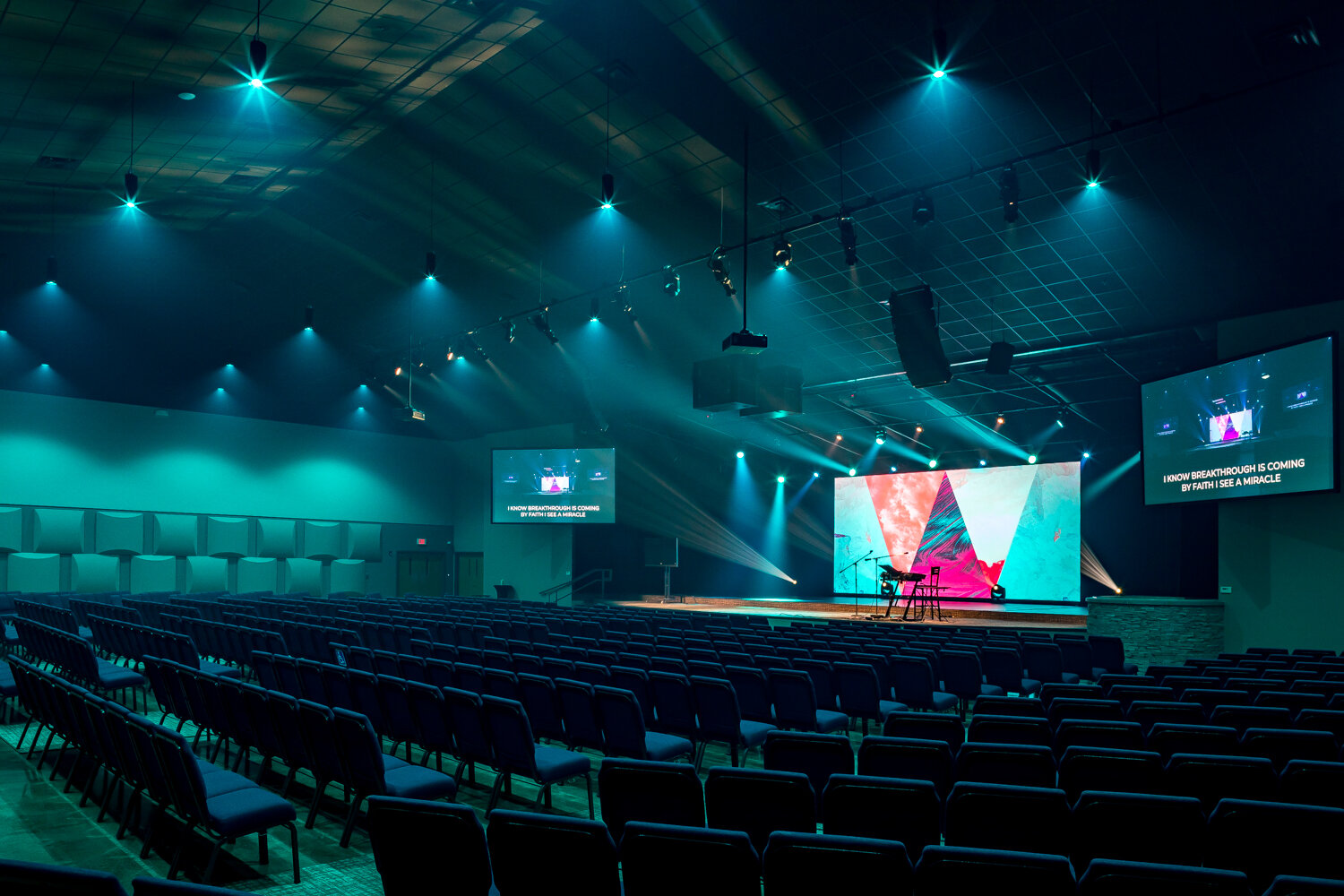Theatrical lighting gets much of the attention in the design of church and worship spaces. But architectural lighting (including house lights in performance spaces), both functional and aesthetic, deserves the spotlight, too.
Architectural lighting is designed to blend seamlessly within any space, such as providing focused downlight or accenting certain areas of a room. This lighting can be comprised of recessed, track or surface-type light fixtures that add a personalized touch or complement specific characteristics of a church’s design.
Church.Design queried church architects and a manufacturer or two to learn about the role and offerings of architectural lighting in lighting projects.
Image: Emmalee Schaumburg
The experts report
Peter F. Gaito, owner of White Plains, N.Y.-based architectural firm Peter Gaito & Assoc., notes that the latest trends in architectural lighting are in visual clarity, brightness and flexibility.
“The pastors want brightness so the congregation [is] able to see words read from paper in their hands, and to keep them alert and focused on their message,” Gaito says. “The visual clarity comes in the form of having enough light to see, without looking at any distracting light bulbs. Flexibility comes in the form of being able to properly dim the lights when appropriate.”
Many churches, following the energy-savings and LED movements of other markets, are also seeking the addition of pre-programmable lighting scene panels. These panels are specifically designed to allow for preset scenes for certain regular functions, such as opening prayers, video screen viewing, Bible readings, weddings, funerals, etc.
Fixture followers
David Evans, president of Kansas City, Mo.-based architectural firm Mantel Teter, is impressed with the performance of the Chroma-Q fixture, in particular, which he calls a "fantastic LED fixture for full dimming and [a] wide spectrum of the RGB color wheel to create any color and mood for experience in a space.”
Image: Emmalee Schaumburg
For instance, the Chroma-Q Inspire LED house light is a powerful, multi-purpose, creative lighting tool that utilizes some of the innovative core technologies found in the popular Chroma-Q Color Force range. It offers beautiful whites, soft pastels and bold saturates, all from a single fixture.
Other trends Evans is noticing in the church space are a desire for more energy-efficient architectural lighting for long-term operating costs, as well as color flexibility to create environments and moods.
“LED has almost become the new standard since it is now cost-competitive, [with] less energy consumed, less heat output, better light output, and [offers] tremendous flexibility with color,” Evans says.
Marcus Hammond of Lenexa, Kan.-based Stark Raving Solutions says LED fixtures that are DMX controlled, often with full color mixing in the fixture, are gaining in popularity. These are popular due to their high output, full color, DMX control, smooth dimming to 0%, reliability, coolness (saves on air conditioning bills), and lack of necessary maintenance once installed.
“We are seeing a demand for RGBW, RGBAW, or color LED configuration to offer any color the user wants,” he says. “It seems the industry standard for LED full-color house lighting is the ChromaQ Inspire fixture, but Chauvet now has the H-605FC, and The Light Source is now offering the HL Pendant with an RGBW engine.”
Duke DeJong, vice president of sales and integration for Tumwater, Wash.-based CCI Solutions, notes house/down lighting accounts for nearly 100% of LED at this point, with it probably being 50/50 on a fixed white vs. full color light output.
“Other than that, we’re seeing a [modest] uptick in LED strip lighting to highlight the architecture,” he says. “We’ve done it on a handful of projects at this point.”
Jason Selznick, vice president of national accounts for Floyd, Va.-based Crenshaw Lighting, a custom manufacturer of lighting products, says he’s seeing churches shift towards restoring fixtures, adding sophisticated LEDs and body lamps, rather than going and buying a new fixture for their architectural lighting.
“Churches are also getting into more sophisticated optics—like reflectors—purpose-made for chip-on-boards coming out,” he says.
This article originally appeared on church.design and is reposted here by permission.




